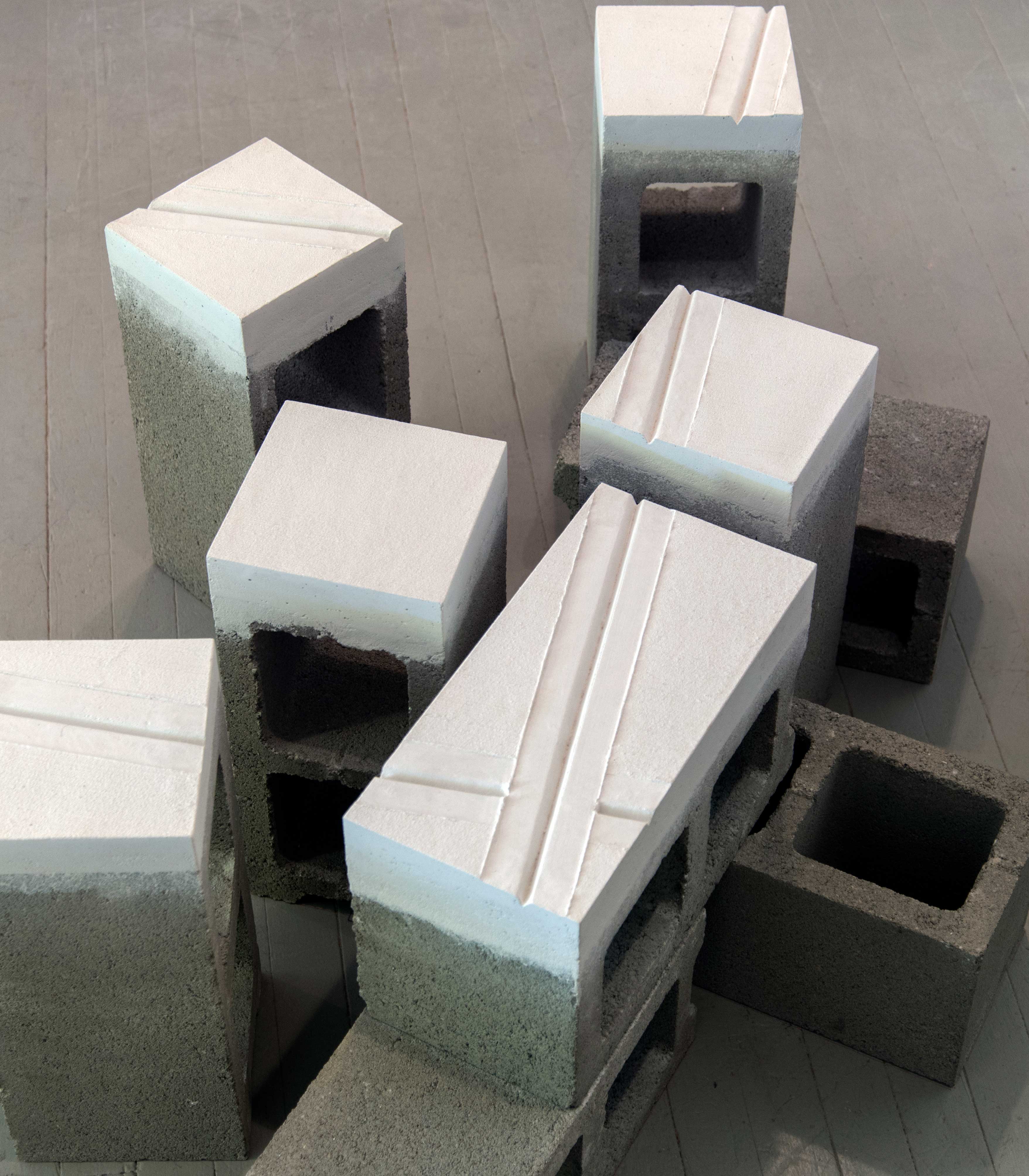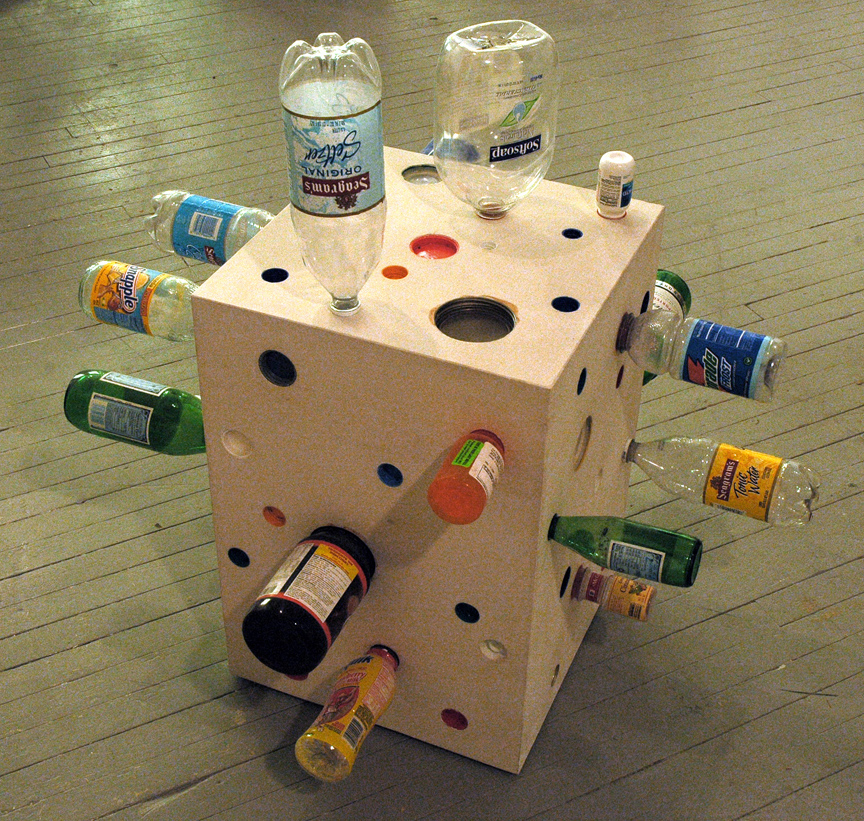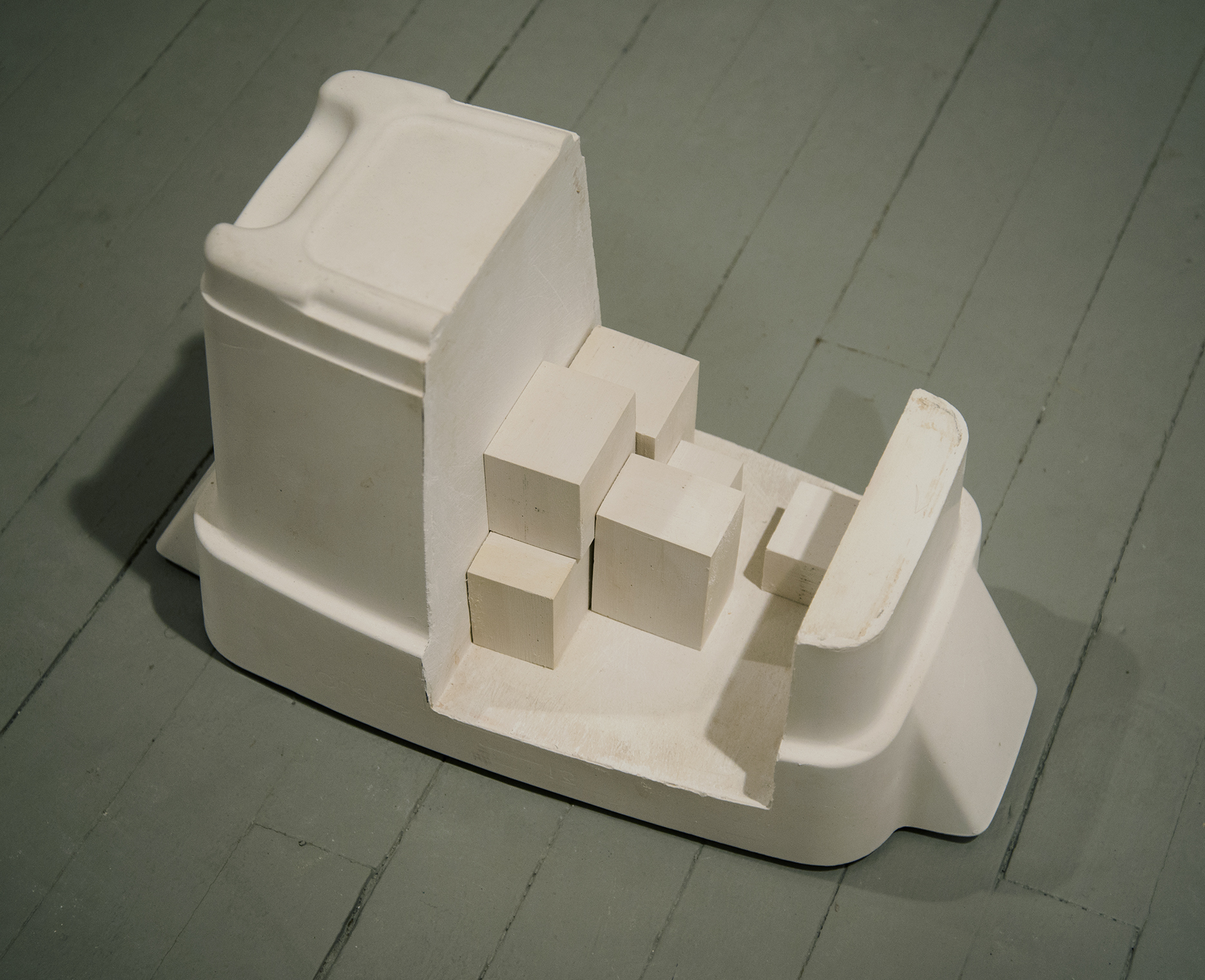Set for Douglas Dunn and Dancers
Institute of Contemporary Art, Boston 1983
A collaboration with choreographer Douglas Dunn and composer John Driscoll, this commission from the I.C.A. encompassed the entire two floors of galleries. Cast plaster floors and pathways and particle board and wooden structures defined spaces to which Dunn’s dancers responded. The audience wandered through the galleries during the performance viewing the fragments of dance on the fragmented structures.
THE BOSTON GLOBE, JANUARY 19, 1983
AN INTRIGUING COLLABORATION AT THE ICA
by Christine Temin, Special to the Globe
Douglas Dunn, Choreographer; John Driscoll, composer: and Jeffrey Schiff, sculptor—In an untitled collaboration, with the Douglas Dunn Dancers and Richard Lerman, musician. At the Institute of Contemporary Art, yesterday, Program repeats tonight.
Two bodies lay on the stark, white, archaic looking platform in the center of the gallery, draping themselves languidly around each other. Another body lay down next to me. The first pair were dancers, the official performers at this intriguing collaboration sponsored by the Institute of Contemporary Art. The body next to me belonged to a member of an audience which, like it or not, itself became part of the event.
The audience was invited to show up any time between two and five and stay as long as we wanted, wandering through the galleries. The six dancers were spread over the ICA’s two floors, moving up and down the staircase, forming temporary duets and trios. We selected our own vantage points, and there was always the tantalizing sense that we didn’t know what we were missing on the other floor, in the other rooms.
The contrast—and sometimes the lack of contrast—between us and the dancers was one of the afternoon’s most striking features. AS opposed to the conditions in a sit-down theater, we were all bathed in the same light, all moving, all inhabiting the same space, although at the beginning at least there was some reluctance on the audience’s part to invade the dancers’ turf: We cleared a path for them as reverently as if some of us got braver. Hen a dancer slowly advanced up the staircase where I was standing. I stood my ground, making him edge around me. It wasn’t any actual physical threat that made my heart pound here: It was the uncomfortable idea that I was breaking the barrier of the performer’s space.
Site-specific dance events have been a mainstay of the avant-garde for two decades now, with hundreds of dances designed for gymnasiums, galleries, rooftops, and streets. Collaboration with composers and visual artists has been another major interest of contemporary choreographers. There was nothing new about the ICA’s idea of inviting a choreographer, a composer, and a sculptor to work together, but the result is unique simply because the work was tailored to the ICA’s bizarre, nonrectilinear, two-level space.
Three-dimensionality was a major theme. The electronic sound-controlled by composer John Driscoll and musician Richard Lerman, both sitting at tables loaded with what looked like enough gadgetry to conduct a missile launch—sometimes seemed to come from distant canyons, and at other times seemed as close as someone whispering in our ears. We were enveloped by a round ocean of sound, whose origins, thanks to Driscoll’s rotating speakers, shifted unpredictably.
Jeffrey Schiff’s set often echoed the odd-angled space, with shelters in the corners, a large central platform, and a low, pier-like form which shot daringly out into the room. No matter how familiar we thought we were with the ICA space. Schiff’s architectural fragments caused us to notice it anew: Were those white pillars in the middle of his platform part of his design, or were they really holding up the building? (The latter, it turns out.).
Sometimes the dancers seemed to be performing a movement hymn to the space and the set. They slithered around columns, stretched out along the baseboards, and in an especially captivating moment three of the came together to extend Schiff’s pier: Two of them crouched, while the third stretched over their knees; their hands waved gently, like lapping waves, continuing the sea-suggestion of the pier. Great concentration was required of the dancers, who moved among us without registering any sign of recognition that we were there. Their inward focus seemed quite similar to the communion between art and viewer that takes place in a gallery when people stare at what’s hanging on the walls, oblivious of their fellow watchers. Set, sound and choreography were deliberately spare. I don’t think I’d find any one element of this work interesting for long on its own. But together, and with the richness added by the presence and behavior of the large audience which turned out despite the snowstorm, they clicked, providing a welcome highlight in a lean dance season.



